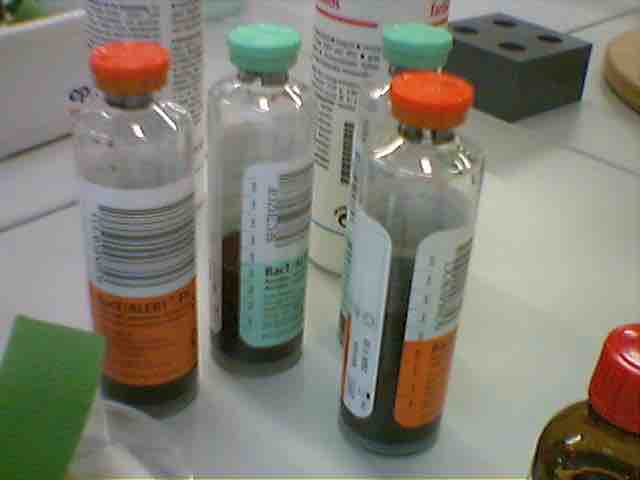Cultivation of Specimen
The success of pathogen identification and treatment depends on how the specimen is collected, handled, and stored. It is also critical that the pathogen is isolated in a pure culture first. Direct microscope observation of a fresh or stained specimen is one of the most rapid methods of determining characteristics. Stains most often employed for bacteria are the gram stain, though they do not work on some organisms.
The direct florescence antibody (DFA) test can highlight the presence of the microbe in patient specimens by means of labeled antibodies. This test is useful for bacteria such as syphilis spirochete, which are not readily cultivated in a laboratory, or if a rapid diagnosis is essential for the survival of a patient.
In most cases, specimens are also inoculated into differential media that define such characteristics as fermentation patters (mannitol salt and MacConkey agar) and as reactions in blood (blood agar). A patient's blood is usually cultured in a special bottle of broth that can be periodically sampled for growth. Work must be done from isolated colonies or pure cultures, as working with mixed or contaminated cultures gives misleading and inaccurate results. From such isolates, clinical microbiologists obtain information about a pathogen's microscopic morphology and staining reactions, culture appearance, motility, oxygen requirements, and biochemical characteristics.
Serological testing uses in-vitro diagnostic testing of serum, has a high degree of specificity and sensitivity, and is based on the specificity an antibody has for its antigen. These techniques do not necessitate a cultivation step. Serum can be directly used in agglutination, precipitation, complement fixation, fluorescent microscopy, and enzyme-linked assays. Results of specimen analysis are entered in the patient's summary chart.

Blood culture
This blood is cultured in a bottle to detect bloodstream infections.